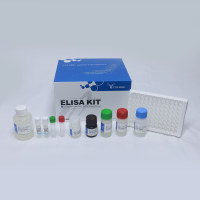In Vivo Reprogramming of Human Telomerase Reverse Transcriptase (hTERT) by Trans-Splicing Ribozyme to Target Tumor Cells
互联网
互联网
相关产品推荐

InVivoMAb 抗小鼠 CD274/PD-L1/B7-H1 Antibody (10F.9G2),InVivo体内功能抗体(In Vivo)
¥2700

Recombinant-Mouse-Mitoferrin-2Slc25a28Mitoferrin-2 Alternative name(s): Mitochondrial RNA-splicing protein 3/4 homolog; MRS3/4 Mitochondrial iron transporter 2 Solute carrier family 25 member 28
¥12012

促销中大鼠肿瘤坏死因子α(TNF-α)/Rat TNF-α/tumor necrosis factor (TNF superfamily,member 2)/Tnf;Tnfa;Tnfsf2;Tumor necrosis factor;Cachectin;TNF-alpha;Tumor necrosis factor ligand superfamily member 2;TNF-a) [Cleaved into: Tumor necrosis factor;membrane for/TNF/ELISA试剂盒
¥3420¥3800

hTERT-HPNE人胰腺导管上皮细胞|hTERT-HPNE细胞
¥1500

IL-2重组蛋白|Recombinant Human IL2 Protein
¥1080
相关问答

